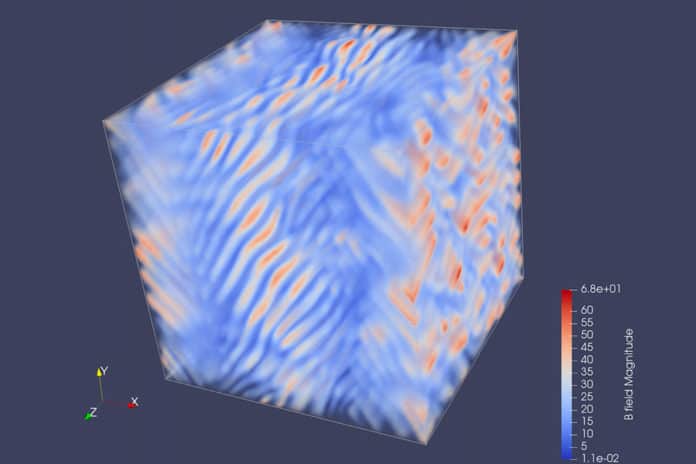All cosmic objects are embedded in magnetic fields. However, these fields are weak, but they are dynamically significant because they have profound effects on the dynamics of the universe.
The origin of these cosmic magnetic fields remains one of the most fundamental mysteries in cosmology, despite decades of intensive attention and inquiry.
By studying the dynamics of plasma turbulence, scientists from MIT are helping to solve one of the mysteries of the origins of cosmological magnetic fields.
The previous study by scientists offered an understanding of how turbulence could amplify preexisting magnetic fields through the dynamo process. This discovery puzzled scientists more, leaving them wondering: If a turbulent dynamo could only amplify an existing field, where did the “seed” magnetic field come from in the first place?
There is no complete and self-consistent answer to the origin of astrophysical magnetic fields until one understands how the sees fields arose.
The new study offers an answer, showing that the Magnetic field arose from an utterly unmagnetized state to the point where it is strong enough for the dynamo mechanism to take over and amplify the area to the magnitudes that we observe.
Models demonstrated how convective motion might magnify a preexisting field. This is an example of “self-organization,” when large-scale structures emerge spontaneously from small-scale dynamics in complex dynamical systems. However, like in a power plant, a magnetic field was required to create a magnetic field.
Throughout the universe, a similar process is at work. However, the electrically conducting fluid in stars, galaxies, and the space between them is plasma, a state of matter that exists at extremely high temperatures and in which electrons are ripped away from their atoms. Plasmas can be seen on Earth in lightning or neon lights. The dynamo effect can magnify an existing magnetic field in such material if it starts at a low level.
Where does this seed field come from?
To find out the answer, scientists developed an underlying theory. They performed numerical simulations on powerful supercomputers that show how the seed field can be produced and what fundamental processes are at work.
The plasma between stars and galaxies is extremely diffuse, with around one particle per cubic meter. That’s very different from the interiors of stars, where particle density is roughly 30 orders of magnitude higher. Because of the low densities, the particles in cosmic plasmas never collide, which has crucial implications for their behavior that had to be factored into the model developed by these scientists.
According to MIT scientists ‘ calculations, the dynamics in these plasmas originated from well-ordered waves but turned turbulent as the amplitude rose, and the interactions became severely nonlinear. They demonstrated that the earliest magnetic fields could be spontaneously produced via generic large-scale motions as basic as sheared flows by adding detailed impacts of plasma dynamics at tiny scales on macroscopic astrophysical phenomena. Mechanical energy was turned into magnetic energy in the same way it was in the terrestrial examples.
Professor Ellen Zweibel of the University of Wisconsin at Madison notes that “despite decades of remarkable progress in cosmology, the origin of magnetic fields in the universe remains unknown. It is wonderful to see state-of-the-art plasma physics theory and numerical simulation brought to bear on this fundamental problem.”
Journal Reference:
- Muni Zhou et al. Spontaneous magnetization of collisionless plasma. DOI: 10.1073/pnas.2119831119
